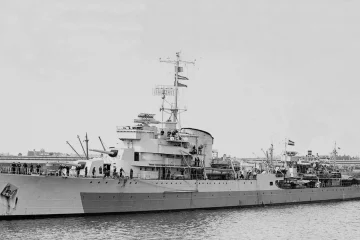Throughout World War II, the Dutch Merchant Navy (Koopvaardij) played a crucial role in the global war effort, especially in the Pacific following the fall of the Dutch East Indies (modern-day Indonesia) to Japanese forces in early 1942. This article explores the enduring legacy of the Dutch Merchant Navy in both the Netherlands and Australia, where their contributions are commemorated by monuments and plaques that serve as a lasting reminder of their bravery and sacrifices.
The Role of the Dutch Merchant Navy During WWII
At the outbreak of WWII, the Dutch merchant fleet was one of the largest in the world. The Netherlands’ strategic location as a colonial power meant that its ships were vital in maintaining supply lines, transporting troops, and delivering essential resources. After the Dutch East Indies fell to the Japanese, the fleet and its sailors continued to operate, supporting the Allies’ Pacific campaigns.
With the Dutch government-in-exile in London and the remnants of its military forces regrouping in Australia, Dutch merchant ships became critical in evacuating civilians and transporting supplies to support the Allied forces fighting Japan. Despite their homeland being occupied, these sailors navigated dangerous waters across the Pacific, often under constant threat from Japanese submarines and aircraft.
Koopvaardij Monuments in the Netherlands
Across the Netherlands, various monuments pay tribute to the Dutch Merchant Navy’s contribution during WWII, acknowledging the risks faced by these sailors and the ultimate sacrifice made by thousands.
Koopvaardijmonument De Boeg in Rotterdam
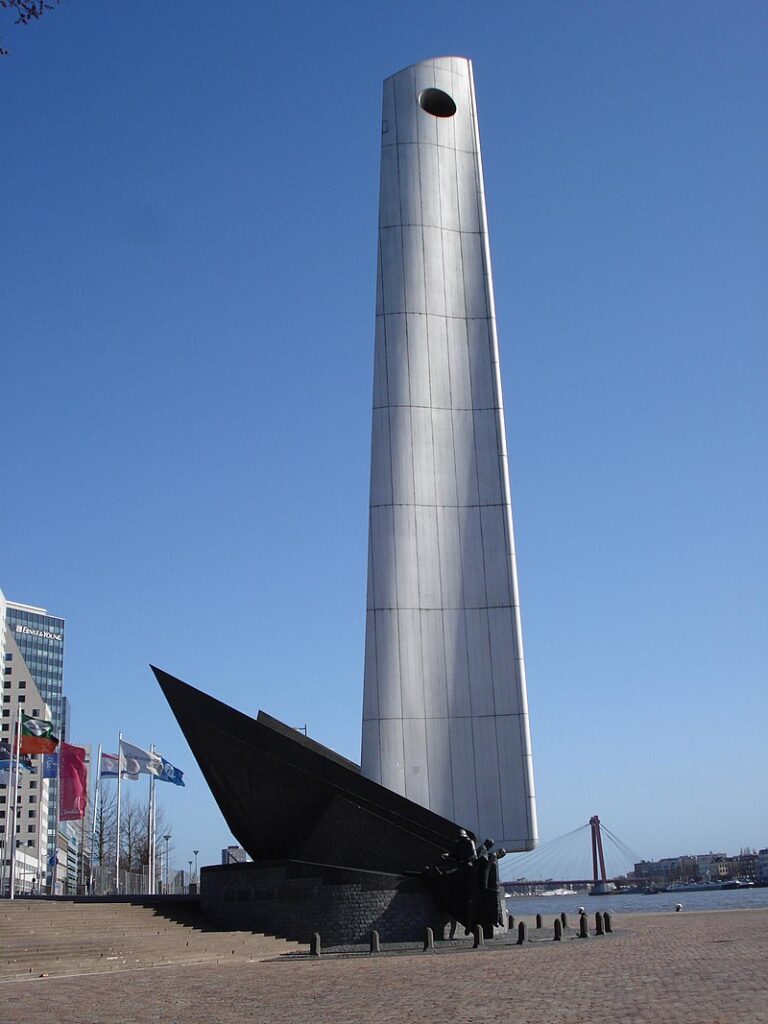
- Location: Leuvehaven, Rotterdam.
- Significance: As the most iconic monument, De Boeg represents the bow of a ship, symbolising the merchant fleet that carried out vital missions during the war. Over 3,500 Dutch merchant sailors lost their lives, many serving in the Pacific theatre. The monument honours their sacrifice and bravery in facing relentless threats at sea.
Koopvaardijmonument in Vlissingen
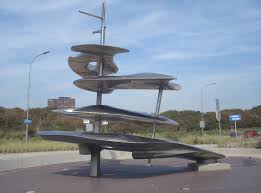
- Location: Koningsweg, Vlissingen.
- Significance: The monument in Vlissingen honours the Dutch Merchant Navy sailors who perished during World War II. As an important maritime city, Vlissingen had deep connections to the Dutch shipping industry. The monument is shaped like a broken anchor, symbolising the lives lost and ships that never returned. It pays tribute to the sailors who braved dangerous waters to ensure the vital flow of goods and personnel during the war.
KNSM Island in Amsterdam
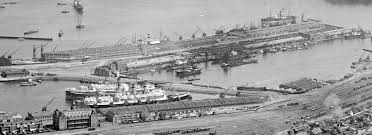
- Location: KNSM Island, Amsterdam.
- Significance: KNSM Island, named after the Koninklijke Nederlandsche Stoomboot Maatschappij (Royal Dutch Steamboat Company), has a deep historical connection to the Dutch Merchant Navy. Founded in the 19th century, KNSM was one of the major Dutch shipping companies, and during World War II, its ships were integral to the global war effort.
- Connection to WWII: Many of KNSM’s ships and sailors were redirected to support the Allied war effort in the Pacific after the fall of the Dutch East Indies. These ships played a crucial role in supplying the Allies, often operating out of Australian ports like Brisbane and Fremantle. The ships transported troops, evacuated civilians, and delivered critical supplies to the front lines.
- Legacy: Although there is no specific Koopvaardij monument on KNSM Island, the area itself is a living reminder of Amsterdam’s significant maritime history and its vital role in WWII. The island and its history are a tribute to the many Dutch sailors who risked their lives at sea, serving in the merchant fleet during the war, including in the Pacific Theatre.
Dutch Merchant Navy Memorials in Australia
Australia became a crucial base for the Dutch after the fall of the Dutch East Indies. The connection between the two nations deepened as Dutch merchant ships operated from Australian ports, helping supply the Allied forces fighting in the Pacific. Several plaques across Australia commemorate this shared history.
Netherlands & Netherlands East Indies Memorial in Brisbane
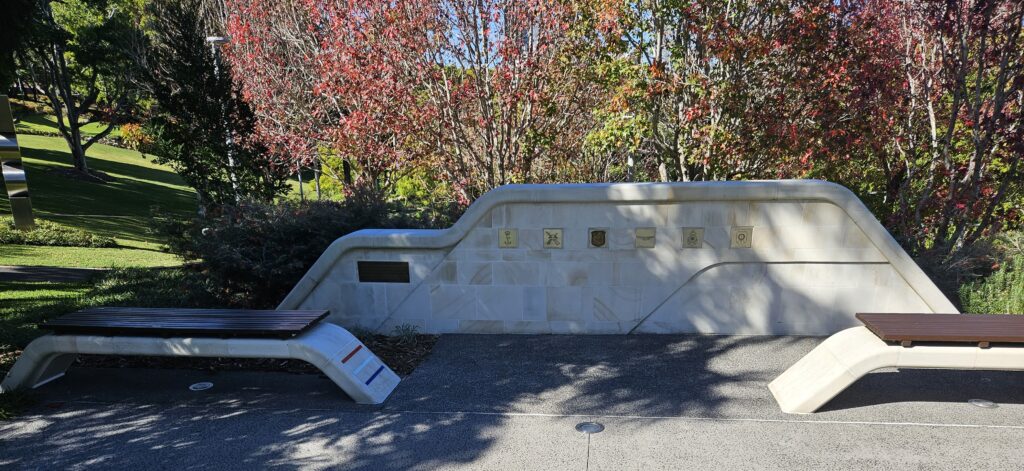
- Location: Memorial Corner, Roma Street Parkland, Brisbane.
- Significance: This memorial commemorates the Dutch men and women, as well as those from the Netherlands East Indies, who joined Australian forces in the defense of Australia during World War II. It includes plaques dedicated to the Royal Netherlands Navy, the Royal Netherlands East Indies Army, and the Netherlands Merchant Navy, as well as civilians from the Dutch East Indies.
Netherlands Australia Memorial in Canberra

- Location: Netherlands Australia Memorial, Canberra.
- Significance: The Netherlands Australia Memorial honours the contributions of the Dutch to the Allied war effort during WWII, particularly in the Pacific theatre. It acknowledges the vital role of Dutch forces—including the Merchant Navy—in ensuring the defense of Australia and in broader operations across the Pacific. The memorial commemorates Dutch military personnel and civilians who stood alongside Australians during this challenging period
A Shared Maritime Legacy
The cooperation between the Dutch Merchant Navy and Australia during WWII represents a significant chapter in both nations’ histories. Dutch ships, operating under the command of Allied forces, ensured that supply lines to the Pacific remained intact and contributed to key operations that ultimately led to Japan’s defeat. The Netherlands lost many sailors in the process, and their sacrifices are honoured not only by the Koopvaardij monuments in their homeland but also by memorials in Australia.
The plaques in Brisbane and the Netherlands Australia Memorial in Canberra, alongside the Dutch monuments, serve as enduring symbols of the bravery and determination of Dutch sailors. These commemorations also highlight the deep bond forged between the Netherlands and Australia in the crucible of war—a partnership that continues to be remembered and honoured today.

